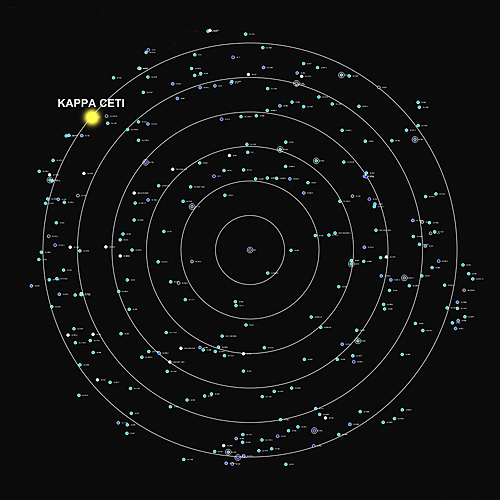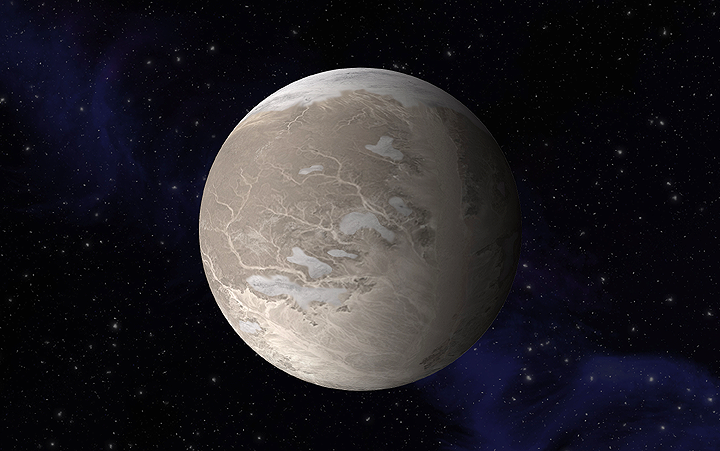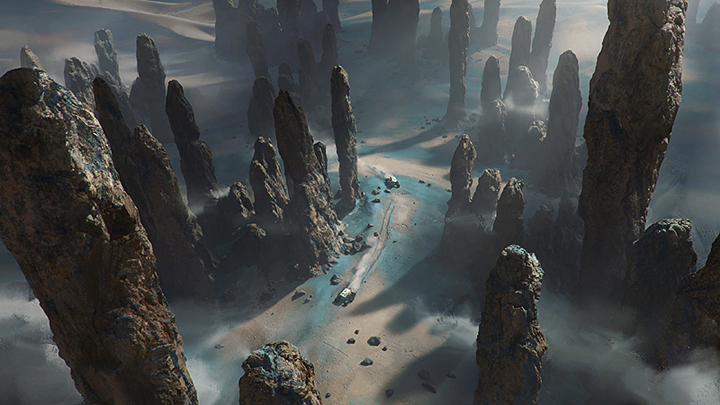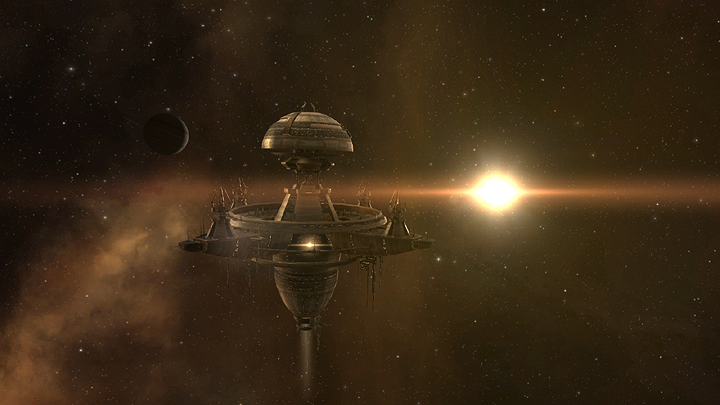
DISTANCE: 29.9 light years (lys) from Sol
NEIGHBORING SYSTEMS: Delta Eridani 7.4 lys Epsilon Eridani 19.8 lys Tau Ceti 20.5 lys
KAPPA CETI is a yellow-orange dwarf star which is prone to frequent and often violent coronal mass ejections. These “superflares” release thousands of times more energy than anything ever witnessed on Earth and can last anywhere between one hour to one week depending on the size of the eruption. This young star has four planets which includes a dense gas giant in a “torch orbit” and three smaller rocky worlds. It is also rich in heavy elements with nearly twice that of Sol and the entire region contains large amounts of Tiberium ore.
OSIRIS is the fourth planet in orbit and is far enough away from its host star for a thin layer of ice to cover much of its otherwise rocky surface. Although this world generates a strong magnetic field of its own, it has been repeatedly subjected to powerful stellar flares which have left it barren and without a viable atmosphere. During these regular eruptions, the planet is bombarded with intense levels of heat and radiation which melts the continent–sized sheets of ice; creating vast floodplains that refreeze after the flare subsides. Just below the surface of this ever-changing landscape, Osiris has the highest concentration of Tiberium ore in the entire system.

This star system was first investigated by the Frontier Industries exploratory division in 2212. The crew of the FIC-507 HORIZON, a deep-space survey vessel, found the entire region to be rich in valuable metal ore, yet nowhere was it more abundant than on the fourth planet in the system. A landing party explored the forbidding world and discovered frozen veins and enormous deposits of Tiberium ore branching out across the entire planet. Spires of solidified geysers, appearing as towering rock formations, reached hundreds of meters into the air and were a stark indication of how quickly this ethereal landscape could change during a coronal mass event. Nevertheless, the potential for establishing a lucrative mining outpost in this system was far too great to be ignored.
In cooperation with both the Heimdall Foundry and the Mantell Corporation, the original founders of this colony began construction on a space station to serve as their base of operations and, in less than a year, had established nearly a dozen mobile drilling units on the planet itself. These roving modules were built to move from one location to another as they excavated raw metal ore, yet they are also capable of launching into space where they can easily rendezvous with the station to unload their cargo. Except for the intermittent periods where the planet is being bombarded by stellar flares, the surface of Osiris is relatively calm and safe for mining.

AURORA station was originally constructed to provide both occupational and residential spaces for its employees and their families. However, as their mining operation became more productive, the number of merchants and traders visiting the system increased as well. Multiple levels were later added to provide generous accommodations for their guests and a variety of social venues for their enjoyment. This station was also uniquely designed to be completely mobile in the event of a massive stellar flare. Rather than applying a simple array of thrusters to maintain a synchronous orbit around Osiris, it utilizes four massive sub-light engines that are capable of moving the entire station out of harm’s way. Although long-term data gathered about the host star has allowed them to predict most of the recurring coronal activity, occasionally an eruption will occur without warning. Because of this, emergency drills are performed on a regular basis to prepare them for mobilization at a moment’s notice.
According to the official census of 2233, AURORA station is home to nearly 15,000 people with additional room for the thousands of visitors it receives each year. This station also includes its own private refinement facility for the purpose of exporting processed ore and materials directly to the buyers. This has effectively removed the middle-man from their operation and made it a far more profitable business venture overall.

Kappa Ceti currently holds the distinction of being the most distant star system to be permanently colonized by the Human race. Despite its remote location, far from the standard travel routes, this colony has proven itself to a valuable member of the interstellar community. This system was eventually incorporated into the Commonwealth Alliance and has become a crucial aspect in maintaining the organization’s self-sufficiency. In more recent years, AURORA station has also become the last vestige of Human civilization for those preparing to journey into the uncharted Western regions of space.